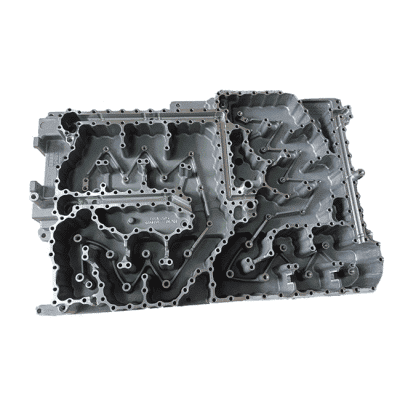Die casting is a process that uses high pressure to force low melting point molten metal into a mold known as die casting mold.
A mold or tools come from steel fabricated for a single project using manufacturing processes such as CNC machining. Consequently, die casting parts have high accuracy, precision, and an excellent surface finish.
The process is a fast and repeatable metal production technique suitable for large or small parts and compatible with various non-ferrous metals. It shares traits with the manufacturing process of injection molding.

Introduced in the 19th century, die casting process uses pressure to fill the mold cavity. Historically, metal casting processes involved pouring liquid metal into the mold with the aid of gravity – and many metal casting processes still work this way.
Die casting became popular and also evolved in the 19th century. The original process of low-pressure injection die casting changed to high-pressure casting methods. Sometimes called high-pressure die casting today, it typically uses 10–140 megapascals of pressure to force the liquid metal into the mold cavity.
The related process of low-pressure die casting (LPDC) is less common.
Types of Die Casting Processes
Die casting falls into two categories: hot-chamber die casting and cold-chamber die casting, which are applicable for different metals.
Hot Chamber Die Casting

The hot chamber die casting process is perfect for working with low melting point materials such as lead, zinc, tin, and magnesium alloys.
Because it is a self-contained system, it is much faster than the alternative, offering short cycle times.
The die casting machine contains the equipment for melting the metal. It injects the metal into the die using pressure from a hydraulic system.
Cold Chamber Die Casting

The cold chamber die casting is perfect for working with high melting point materials such as aluminum.
The process uses a separate furnace to heat the metal and a ladle to bring the molten metal to the coal chamber of the die casting machine, which naturally slows down production rates.
The hydraulic system is similar to that of the hot chamber process. However, it might require a larger pressure ranging from 2000 to 20000 psi.
How Does it Work – Steps of Die Casting Process
Regardless of the state of the chamber, both processes involve injecting molten metal into a die mold under high pressure and proceed as follows:
1 Mold preparation
The interior surfaces of the two die halves are cleaned to remove any impurities and coated with a lubricant for better injection and removal of the solidified product.
2 Injection
The two die halves are closed with high pressure and secured with locking pins.
Melton metal is poured into the shot chamber. The procedure differs between the hot chamber and cold chamber systems. As a result, the shot chamber is hot in the former and cold in the latter.
In both, molten metal is then forced by a plunger into the mold cavity via the sprue. High pressures – up to 35 megapascals in a hot chamber and 140 megapascals in a cold one – ensure fast and comprehensive filling.
3 Cooling
While clamped, the metal cools for solidification. Pressure is maintained during cooling.
The solidified material will have a shape similar to the design of the mold.
4 Ejection
After the die mold is unclamped, the ejector pins will push the solid casting out of the die. The dies are then immediately re-closed, ready for the next shot.
5 Trimming
This is the final step. It removes the excess metal in the sprues, runners, and flash found on the finished product. Trimming can be done using manual tools such as a saw, tumbling, or a hydraulic trim die. The removed metal parts are recyclable and reusable in the process.